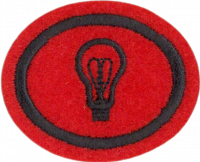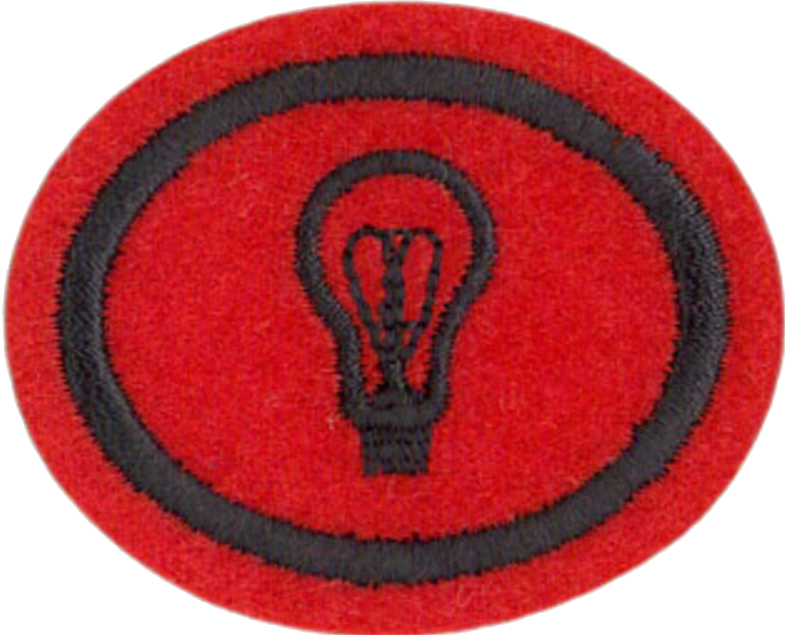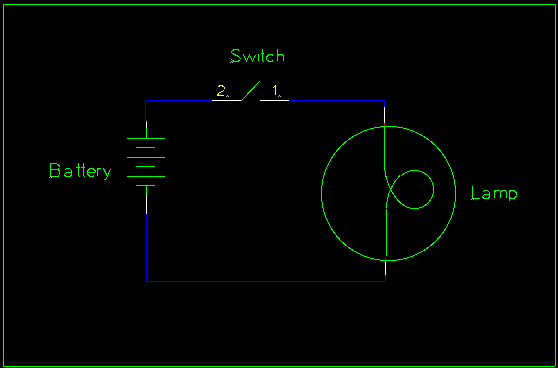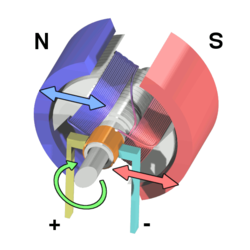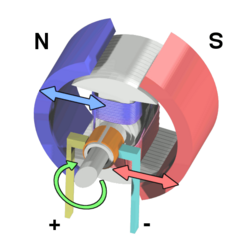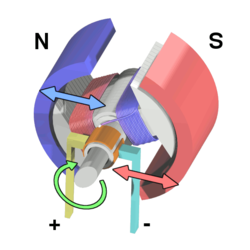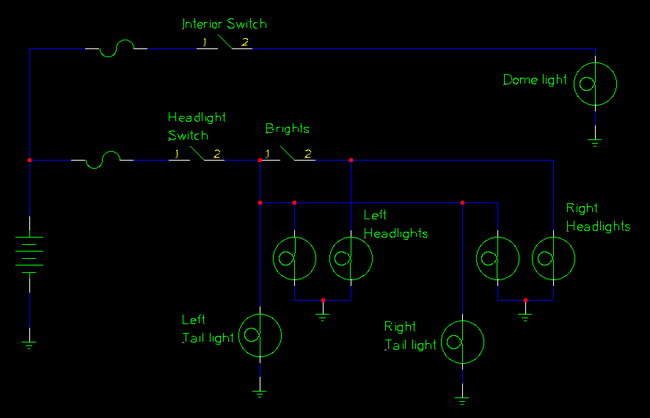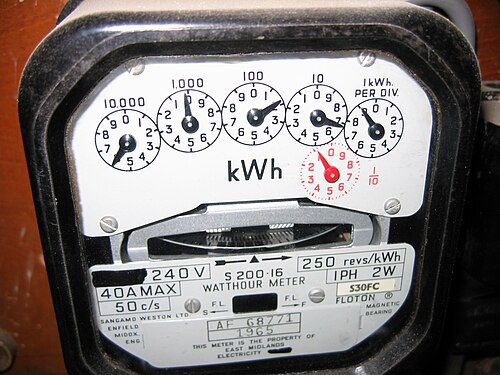Difference between revisions of "AY Honors/Electricity/Answer Key/es"
(Created page with "Especialidades JA/Electricidad/Respuestas") |
(Created page with "</noinclude> <!-- 6. Demostrar la capacidad para sustituir fusibles o reajustar un cortacircuito y demostrar el empalme aprobado del Código Eléctrico Nacional (N.E.C. por su...") |
||
| Line 92: | Line 92: | ||
{{CloseReq}} <!-- 5 --> | {{CloseReq}} <!-- 5 --> | ||
{{ansreq|page={{#titleparts:{{PAGENAME}}|2|1}}|num=6}} | {{ansreq|page={{#titleparts:{{PAGENAME}}|2|1}}|num=6}} | ||
| − | <noinclude> | + | <noinclude></noinclude> |
| − | </noinclude> | + | <!-- 6. Demostrar la capacidad para sustituir fusibles o reajustar un cortacircuito y demostrar el empalme aprobado del Código Eléctrico Nacional (N.E.C. por sus siglas en inglés) utilizando cables aislados. --> |
| − | <!-- 6. | ||
| − | |||
| − | |||
<div lang="en" dir="ltr" class="mw-content-ltr"> | <div lang="en" dir="ltr" class="mw-content-ltr"> | ||
| Line 102: | Line 99: | ||
</div> | </div> | ||
| − | + | <noinclude></noinclude> | |
| − | <noinclude | ||
| − | |||
{{CloseReq}} <!-- 6 --> | {{CloseReq}} <!-- 6 --> | ||
{{ansreq|page={{#titleparts:{{PAGENAME}}|2|1}}|num=7}} | {{ansreq|page={{#titleparts:{{PAGENAME}}|2|1}}|num=7}} | ||
| − | <noinclude> | + | <noinclude></noinclude> |
| − | </noinclude> | + | <!-- 7. Mostrar cómo se rescata a una persona en contacto con un cable eléctrico que tiene electricidad y tener conocimiento del método de la reanimación para una persona inconsciente del choque. --> |
| − | <!-- 7. | ||
| − | |||
| − | |||
<div lang="en" dir="ltr" class="mw-content-ltr"> | <div lang="en" dir="ltr" class="mw-content-ltr"> | ||
| Line 117: | Line 109: | ||
</div> | </div> | ||
| − | + | <noinclude></noinclude> | |
| − | <noinclude | ||
| − | |||
{{CloseReq}} <!-- 7 --> | {{CloseReq}} <!-- 7 --> | ||
{{ansreq|page={{#titleparts:{{PAGENAME}}|2|1}}|num=8}} | {{ansreq|page={{#titleparts:{{PAGENAME}}|2|1}}|num=8}} | ||
| − | <noinclude> | + | <noinclude></noinclude> |
| − | </noinclude> | + | <!-- 8. Hacer un diagrama simple de un sistema de iluminación de un automóvil. --> |
| − | <!-- 8. | ||
| − | |||
<div lang="en" dir="ltr" class="mw-content-ltr"> | <div lang="en" dir="ltr" class="mw-content-ltr"> | ||
| Line 132: | Line 120: | ||
</div> | </div> | ||
| − | + | <noinclude></noinclude> | |
| − | <noinclude | ||
| − | |||
{{CloseReq}} <!-- 8 --> | {{CloseReq}} <!-- 8 --> | ||
{{ansreq|page={{#titleparts:{{PAGENAME}}|2|1}}|num=9}} | {{ansreq|page={{#titleparts:{{PAGENAME}}|2|1}}|num=9}} | ||
| − | <noinclude> | + | <noinclude></noinclude> |
| − | </noinclude> | + | <!-- 9. Hacer un diagrama que demuestre correctamente las luces, interruptores y los convenientes tomacorrientes controlados por cada cortacircuito en una casa. --> |
| − | <!-- 9. | ||
| − | |||
| − | + | {{clear}} | |
| − | |||
| − | |||
<div lang="en" dir="ltr" class="mw-content-ltr"> | <div lang="en" dir="ltr" class="mw-content-ltr"> | ||
| Line 164: | Line 146: | ||
</div> | </div> | ||
| − | + | <noinclude></noinclude> | |
| − | <noinclude | ||
| − | |||
{{CloseReq}} <!-- 9 --> | {{CloseReq}} <!-- 9 --> | ||
{{ansreq|page={{#titleparts:{{PAGENAME}}|2|1}}|num=10}} | {{ansreq|page={{#titleparts:{{PAGENAME}}|2|1}}|num=10}} | ||
Revision as of 14:53, 17 May 2021
1
2
Batteries are capable of storing DC voltage only - they cannot store AC voltage. Most electronic circuitry runs on DC, and electronic appliances that run on AC power usually convert it to DC before it can be used. The advantage AC has over DC is that it can be transmitted over long distances with less loss than a DC circuit providing an equivalent amount of power.
AC circuitry produces a constantly varying magnetic field, and a constantly varying magnetic field will induce a current in an adjacent conductor. The induced current can be measured with a current meter. DC circuitry will only induce a current when a sudden change in the circuit takes place, such as powering it on. The induced current will "spike" briefly and then decay to zero.
3
The circuit above shows how to connect a battery, switch, and light. The light can be replaced with the bell or buzzer.
4
It is far more economical to bring in a single motor rather than have each student buy a kit. Small motors can be bought at most hobby stores, and each student can take turns disassembling it.
From Wikipedia, the free encyclopedia:
The classic DC motor has a rotating armature in the form of an electromagnet with two poles. A rotary switch called a commutator reverses the direction of the electric current twice every cycle, to flow through the armature so that the poles of the electromagnet push and pull against the permanent magnets on the outside of the motor. As the poles of the armature electromagnet pass the poles of the permanent magnets, the commutator reverses the polarity of the armature electromagnet. During that instant of switching polarity, inertia keeps the classical motor going in the proper direction. (See the diagrams below.)
5
Connect multiple cells in series to form a battery and boost the voltage. When doing this, be sure to connect the positive terminal (copper) of one cell to the negative terminal (zinc) of the other.
Connect multiple cells in parallel to boost the current capacity (necessary to light up a bulb). To do this, connect all the nails together with one wire and connect all the copper terminals together with another wire.
6
A breaker is a current-sensing switch. Circuits can be turned off by flipping the switch away from the center of the breaker panel, and turned back on again by flipping the switch towards the center of the breaker panel. When a breaker senses that the current flowing through it exceeds its rated threshold, the switch opens by itself, moving the toggle between the off position and the on position. The breaker is said to have "tripped" when this happens. Before a tripped breaker can be reset, it must first be turned fully to the off position, and then it can be returned to the on position. If the breaker trips again, the circuit is still overloaded. If this is the case, turn off some of the appliances in the circuit before attempting to reset the breaker again.
7
Once the victim has been disconnected from the current, call 911. If the victim is not breathing, start CPR. If the victim is breathing, but unconscious, maneuver the body onto its side to prevent the victim's tongue from blocking the air passage.
8
9
The schematic above shows a typical circuit in a household. The circuit as shown is protected by a fuse (although a breaker would be applicable as well), and has three loads:
- A light controlled by a single switch
- An unswitched outlet
- A light controlled by two switches
More outlets and switches can be added to the circuit, but note that they will all be connected in parallel. All circuits will connect to the black "'hot'" wire and to the white "'neutral'" wire.
A typical house will have about two dozen breakers, and it is rare for a circuit to have more than about eight outlets or lights. Having too many lights or outlets on a single circuit will cause the breaker to trip or the fuse to blow, so several circuits are run in a house.
10
Electric meters measure electricity in kilowatt hours. One kilowatt hour (kWh) will provide 1000 watts for one hour. Electric companies typically charge a flat rate per kilowatt hour, and this rate can be found on an electric bill. Some electric companies charge varying rates depending on when the electricity is used, charging a lesser rate when electrical demand is lower (such as during the night). For this requirement it is a lot easier to assume a flat rate, but even then utility companies do not always make it easy. For example, they may break the rate down into several components and they may add flat fees as well. If this is the case for you, simply add all the component rates together to get an aggregate rate. The component rates can be very small values - fractions of a penny.
To calculate the rate, one must first read the meter. The meter is not reset when it's read, so one must know what the meter read during the previous billing cycle. The current reading is subtracted from the previous reading, and the difference is multiplied by the rate.
[math]\displaystyle{ bill = \left((current\ reading - previous\ reading)\times aggregate\ rate \right)+flat\ fees }[/math]
The meter pictured above shows 60169.1 kilowatt hours (not 60279.1 - the dials have not yet reached the 2 or the 7 yet). To calculate an electric bill assume the following:
Previous month's reading: 59023.6 kWh
Aggregate rate: 11.274 cents per kWh
Flat fees: $20
The bill would be calculated as follows:
[math]\displaystyle{ \begin{matrix}bill & =& \left( (60169.1 - 59023.6) \times 0.11274\right) \ +\ $20 \\ \ & =& (1146.5 \times 0.11274)\ +\ $20 \\ \ & =& $129.14\ +\ $20\\ \ &=& $149.14\end{matrix} }[/math]
Note that this is rounded to the nearest cent.
